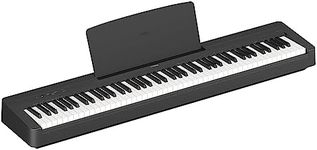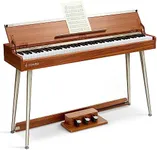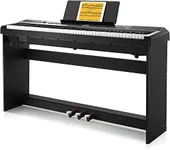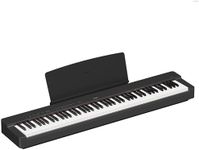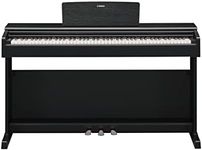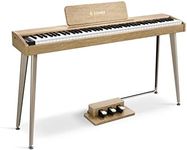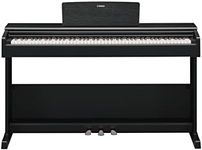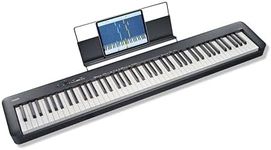Buying Guide for the Best Digital Piano
Choosing the right digital piano can be a rewarding experience if you know what to look for. Digital pianos come with a variety of features and specifications that can cater to different needs, whether you are a beginner, an intermediate player, or a professional. Understanding these key specifications will help you make an informed decision and find the best fit for your musical journey.Keyboard ActionKeyboard action refers to the mechanism that simulates the feel of an acoustic piano. This is important because it affects how the keys respond to your touch. There are three main types: non-weighted, semi-weighted, and fully weighted (hammer action). Non-weighted keys are lighter and easier to press, suitable for beginners or those who prioritize portability. Semi-weighted keys offer a balance between ease of play and a more realistic feel. Fully weighted keys mimic the resistance of an acoustic piano, ideal for serious players who want an authentic experience. Choose based on your playing level and preference for realism.
PolyphonyPolyphony is the number of notes a digital piano can produce at the same time. This is crucial for playing complex pieces, using the sustain pedal, and layering sounds. Basic models may offer 32 or 64-note polyphony, which is sufficient for beginners. Intermediate players might prefer 128-note polyphony to ensure smooth performance during more intricate compositions. Advanced players and professionals should look for 192-note or higher polyphony to handle the most demanding pieces without note dropouts. Consider your playing style and the complexity of the music you intend to play.
Sound QualitySound quality is determined by the digital piano's sound engine and the samples used. High-quality sound engines and samples provide a more realistic and expressive sound. Look for pianos that use multi-layered samples and advanced sound modeling technologies. Entry-level models may have simpler sound engines, which are adequate for practice and casual playing. More advanced models offer richer, more nuanced sounds that can inspire and enhance your performance. Test the sound quality in person if possible, and choose a piano that resonates with your musical taste.
Speakers and AmplificationThe built-in speakers and amplification system affect how the sound is projected. This is important for home practice, performances, and recording. Smaller, less powerful speakers are fine for personal practice in a quiet environment. Larger, more powerful speakers are better for performances and playing in larger rooms. Some digital pianos also offer external speaker outputs for connecting to a PA system or studio monitors. Consider where and how you will be using the piano to determine the appropriate speaker size and power.
ConnectivityConnectivity options include USB, MIDI, audio outputs, and Bluetooth. These are important for integrating the digital piano with other devices, such as computers, tablets, and sound systems. USB and MIDI connections are essential for using music software, recording, and accessing online lessons. Audio outputs allow you to connect to external speakers or recording equipment. Bluetooth connectivity can enable wireless connections to apps and other devices. Think about how you plan to use the piano and what additional equipment you might need to connect.
PortabilityPortability refers to the ease with which you can move the digital piano. This is important if you need to transport the piano frequently, such as for gigs, lessons, or moving between rooms. Portable models are lighter and often come with detachable stands, making them easier to carry. However, they may compromise on features like keyboard action and speaker quality. Larger, more stationary models offer better performance and features but are harder to move. Consider your lifestyle and how often you will need to transport the piano.
Additional FeaturesAdditional features can enhance your playing experience and provide more versatility. These may include built-in lessons, recording capabilities, various instrument sounds, and accompaniment styles. Beginners might benefit from built-in lessons and practice aids. Intermediate and advanced players might look for recording features and a wide range of instrument sounds to explore different genres. Consider what extra features will support your learning and playing goals, and choose a model that offers the right combination for you.

